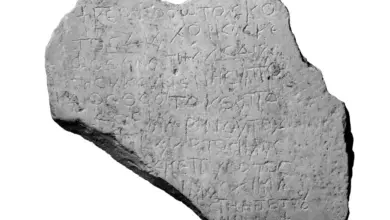Researchers Just Revealed This Terrifying Discovery That No One Was Supposed To See

As we delve deeper into the mysteries of history, surprising discoveries often shake up what we thought was true about the past. This can sometimes make it difficult to understand, as everything seems unreliable. However, these discoveries also present an exciting challenge, especially when some of them completely change our perceptions. From revealing ancient civilizations that once ruled vast territories to unexplained underwater phenomena, our world is truly strange. And in this article, we will explore the most bizarre historical mysteries ever discovered.
**Number 12: The Lost Empire**
In South America, near the area of present-day Peru and Bolivia, there once existed a powerful empire, but over time, its glory was gradually forgotten. The Tiwanaku Empire, with its powerful imprint, has almost faded from collective memory. But beneath the placid waters of Lake Titicaca, a team of marine biologists stumbled upon this forgotten past. While diving in search of underwater structures, they discovered a collection of incredible artifacts—from exquisite gold items to perfectly preserved sacred objects and offerings.
These artifacts, dating from the 8th to 10th centuries, reveal the story of a brilliant civilization that once thrived in this region. The stone structures rise from the lake floor, silently testifying to the great culture that once existed. The discovery not only offers insight into the daily life and spiritual beliefs of the Tiwanaku people, but also serves as a powerful reminder of their presence. Lake Titicaca seems to have kept this civilization a secret for centuries, waiting for the right moment to share their story with the world.
**Number 11: Baltic Sea Anomaly**
In 2011, a Swedish treasure hunter team, Ocean X, discovered a strange circular structure on the bottom of the Baltic Sea using sonar technology. The structure, which is about 60 meters in diameter and has a raised center, left researchers puzzled. With its unique shape and unusual features, the anomaly quickly attracted attention, sparking a series of hypotheses from scientists and researchers. Some suggested that it could be a natural geological formation, while others believed that it could be the remains of an ancient sunken city.

Some bold hypotheses even proposed that the structure was an alien spacecraft that crashed to Earth thousands of years ago. Although there have been many investigations and deep dives to study the structure, so far no definitive answer has been given. The Baltic Sea Anomaly remains an unsolved mystery, challenging our understanding of history and the natural world.
The metals in King Tut’s dagger revealed an extraordinary origin: its composition was strikingly similar to that of meteorites. This discovery led to the once-dismissed theory that the blade was forged from a “fallen star.” Initially, this notion was deemed mythical rather than scientific. However, advancements in testing technology eventually confirmed its meteoritic origins. The blade contains high levels of nickel and cobalt—elements common in meteorites but rare in Earth’s iron. What was once seen as fantastical is now proven fact: King Tut’s dagger was crafted from iron that fell from the sky.
Far more than a practical tool, the weapon symbolized divine power. Ancient Egyptians revered objects from the heavens, believing they held spiritual significance. This groundbreaking discovery has reshaped our understanding of ancient Egypt’s craftsmanship and cosmic connection. It reveals a civilization not only skilled in metallurgy but deeply attuned to the mysteries of the universe.
Meanwhile, in Yemen’s remote desert, another wonder—shrouded in legend—has captivated imaginations for centuries. Known as the “Well of Hell,” the Well of Barhout is a massive sinkhole over 300 feet deep. For generations, locals avoided this ominous site, believing it to be cursed, a portal to the underworld where evil spirits lurked. Many claimed to hear eerie sounds or feel a chilling presence near the well, reinforcing its sinister reputation.
In 2010, a team of daring explorers descended into its depths to uncover the truth. What they discovered was far from sinister: the well was alive with a thriving ecosystem. Tiny toads hopped across damp surfaces, colorful birds darted between crevices, and snakes slithered over rocks. The once-dreaded pit revealed itself as a vibrant world teeming with life.
The surprises didn’t end there. Scattered across the cave floor were rare, smooth formations called cave pearls, formed over millennia by water’s slow movement. Stalactites and stalagmites decorated the cave, some resembling stone drapery, adding to the surreal, otherworldly atmosphere. Above, four towering waterfalls, each 150 feet high, cascaded into the cavern, creating mist that shimmered in dim light. This once-feared abyss proved to be a breathtaking natural wonder, showcasing the resilience and beauty of nature.
Lastly, the Iron Pillar of Delhi, a seven-meter-tall relic, has defied time and the elements for over 1,700 years. Built during the Gupta period in the 4th century, this monument remains rust-free despite exposure to harsh weather and pollution. Scientists have long been puzzled by its durability. Some speculate that ancient metallurgists developed a unique iron blend that created a protective layer. Others believe they employed a long-lost technique, now forgotten to history.
Adding to the intrigue, the pillar is inscribed with ancient texts detailing the victories of forgotten kings, yet these offer no clues about its construction. Was the pillar meant to symbolize eternal strength or something more mysterious? Did its creators possess advanced knowledge of metallurgy that modern science has yet to understand?
These extraordinary discoveries—from a dagger forged from a meteorite to a vibrant ecosystem hidden in a feared sinkhole, and an ancient pillar defying corrosion—showcase humanity’s deep connection to the unknown. What other secrets might still lie hidden beneath our feet, waiting to rewrite history?








